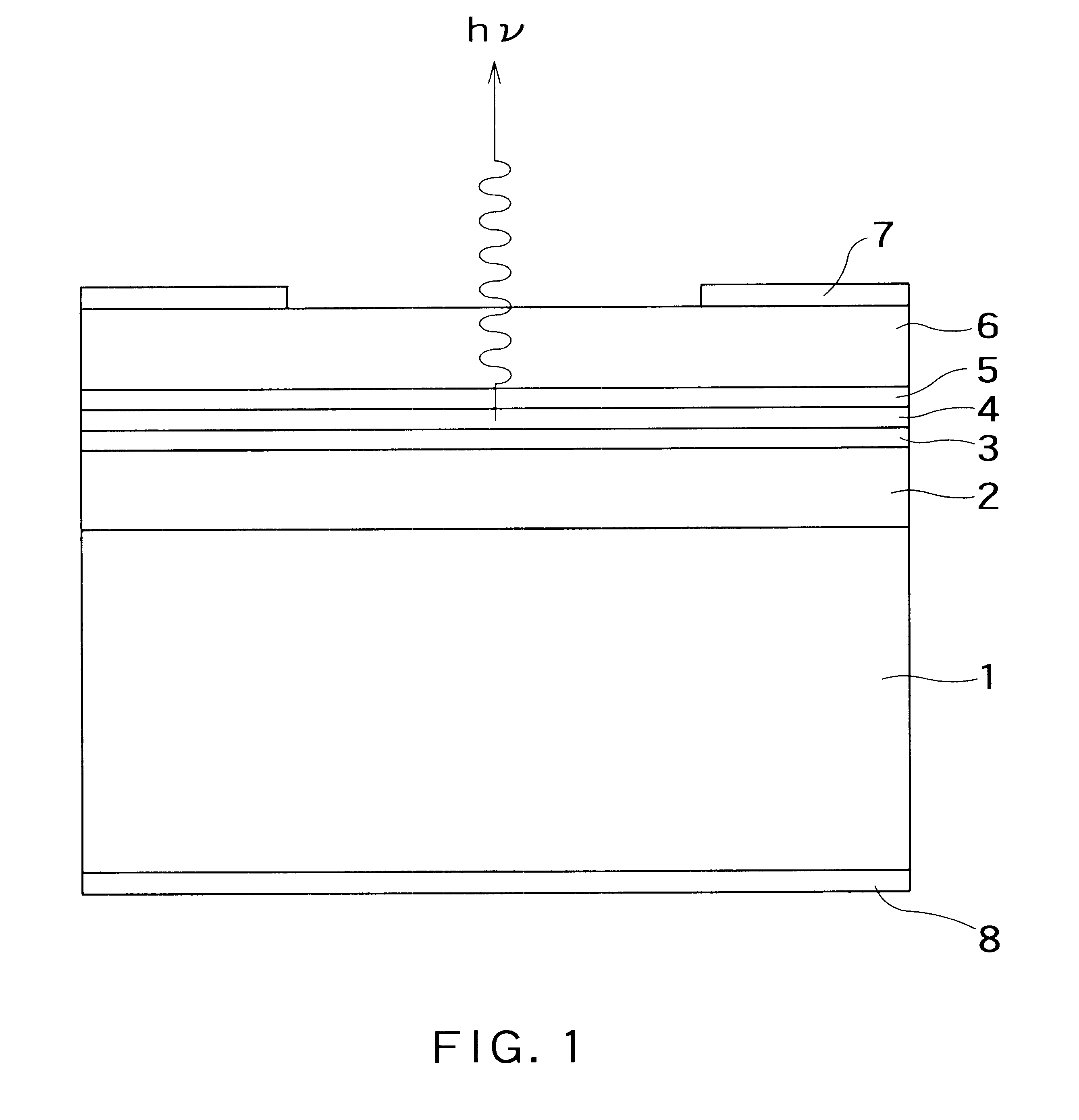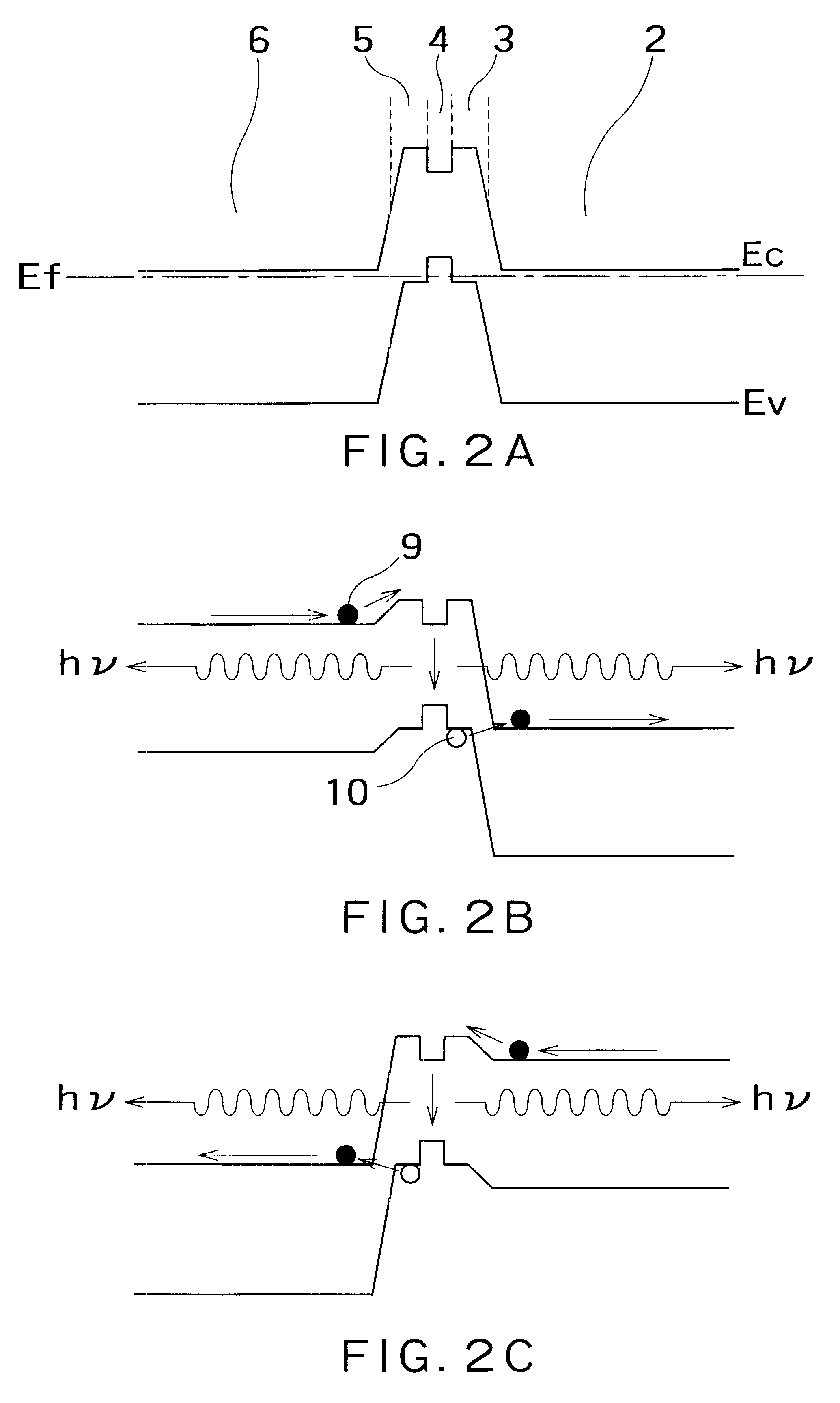Bidirectional semiconductor light-emitting element and optical system
a light-emitting element and optical system technology, applied in semiconductor laser arrangements, semiconductor lasers, lasers, etc., can solve the problems of reducing the overall power conversion efficiency, forcible power consumption, and inevitably generating electric switching losses in the installation of the rectifier circui
- Summary
- Abstract
- Description
- Claims
- Application Information
AI Technical Summary
Benefits of technology
Problems solved by technology
Method used
Image
Examples
Embodiment Construction
The present invention will be described below in detail with reference to the accompanying drawings.
FIG. 1 schematically shows in section the structure of a bidirectional semiconductor light-emitting element according to an embodiment of the invention, by taking an example of the device of an n-p-n junction type. In the drawing, a reference numeral 1 denotes an n-type semiconductor substrate; 2 a high concentration n-type semiconductor layer; 3 a high concentration p-type semiconductor layer; 4 a light emitting layer (active layer); 5 a high concentration p-type semiconductor layer: 6 a high concentration n-type semiconductor layer; and 7 and 8 electrode metals. The p-n junction of the reference numerals 2 and 3 and the p-n junction of the reference numerals 5 and 6 exhibit usual p-n junction characteristics under a forward bias. However, these p-n junctions are set to generate a tunneling current between bands When a reverse bias of a predetermined magnitude or higher is applied.
As...
PUM
 Login to View More
Login to View More Abstract
Description
Claims
Application Information
 Login to View More
Login to View More - R&D
- Intellectual Property
- Life Sciences
- Materials
- Tech Scout
- Unparalleled Data Quality
- Higher Quality Content
- 60% Fewer Hallucinations
Browse by: Latest US Patents, China's latest patents, Technical Efficacy Thesaurus, Application Domain, Technology Topic, Popular Technical Reports.
© 2025 PatSnap. All rights reserved.Legal|Privacy policy|Modern Slavery Act Transparency Statement|Sitemap|About US| Contact US: help@patsnap.com



